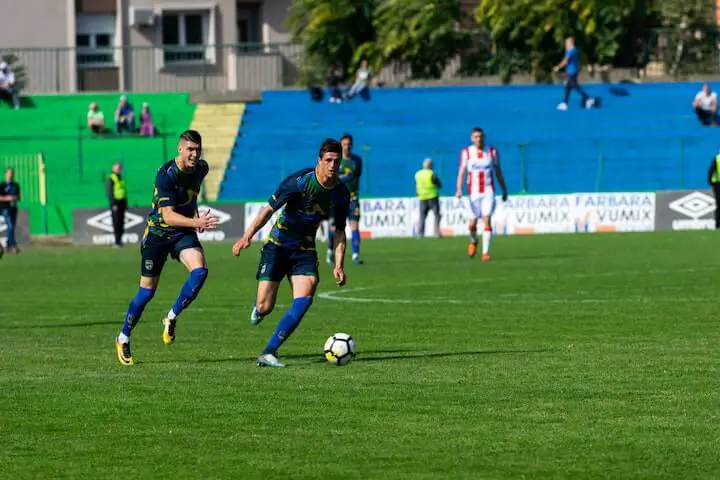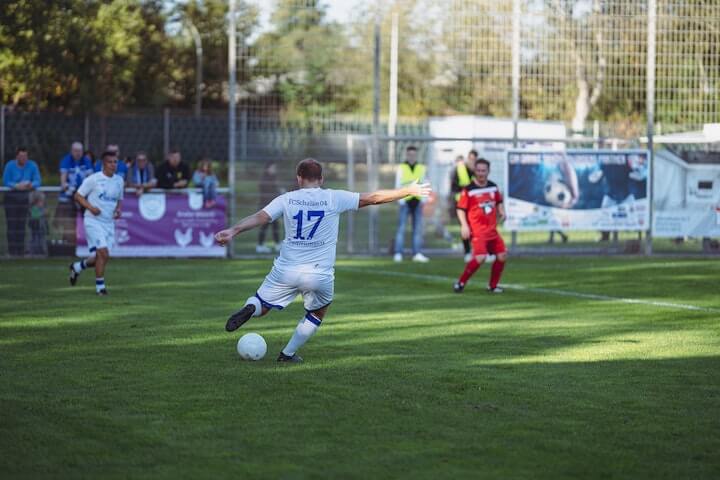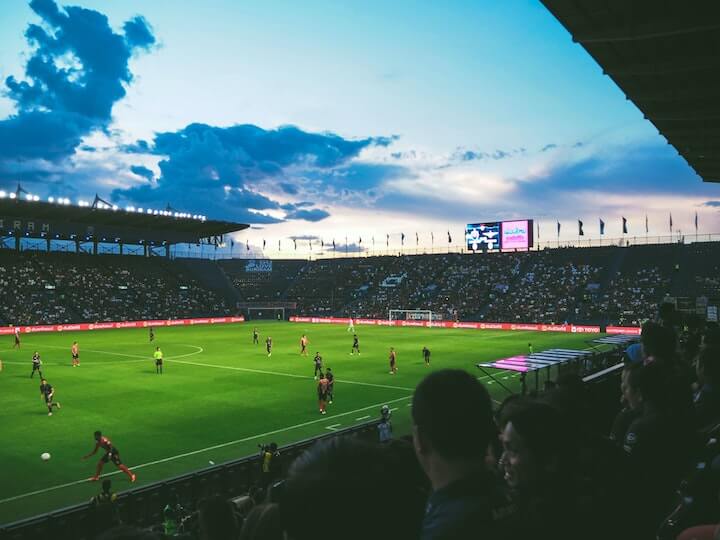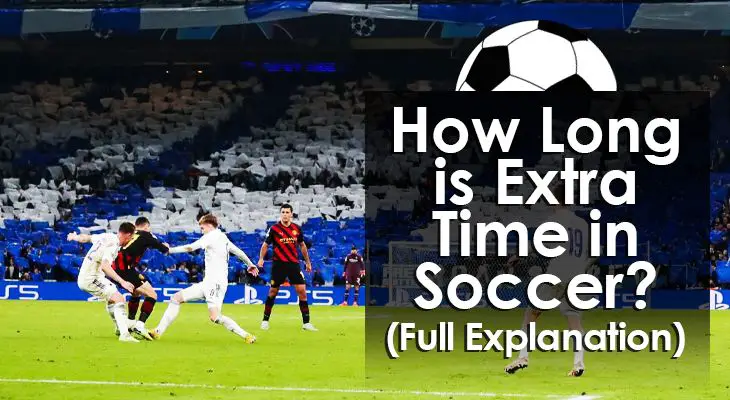How Long is Extra Time in Soccer? (Full Explanation)
Extra time is an important feature to determine the winner of a game after a tie.
The length of a standard soccer game is two 45-minute halves with a 15-minute interval.
In soccer, the clock doesn’t stop running when the ball goes out of play or there’s a stoppage for a foul, corner, throw-in, substitution, goal kick, injury, or substitution.
Instead, the referee takes note of in-game interruptions and adds “stoppage time” to the end of each half to make up for lost time.
Pausing the clock for every stoppage in play would make the game much slower, kill momentum, and essentially water down the free-flowing nature of the beautiful game.
So, how long is extra time in soccer?
I'll explain...
Stoppage Time vs Extra Time
Soccer fans and pundits often use the terms "stoppage time" and "extra time" interchangeably.
But these are two entirely different processes.
a. Stoppage Time
Stoppage time refers to the additional time added on to either half of a 90-minute game to allow for time lost.
Match officials treat each half separately when it comes to stoppage time.
This meaning stoppage time for the first half accounts for lost time in the opening 45 minutes, while the same goes for the second half.
In other words, the referee doesn’t add additional minutes at the end of a game because of stoppages that occurred in the first half.
b. Extra Time
Extra time is a tiebreaker that takes place after the final whistle at the end of a game.
In knockout games, when the scores are level after 90 minutes (plus stoppage time), the referee blows the final whistle, and the game ends as normal.
After a brief interval (usually 15 minutes), the teams return to the field for extra time to determine the winner.
Just like a regulation game, teams play extra time in two halves

How Long is Extra Time in Soccer?
In professional games, extra time is 30 minutes in total, split into 15-minute halves.
The referee can add stoppage time to each half, just like in a regulation game.
Extra time may be scaled down for youth or recreational games to align with player standards.
When Do Games Go to Extra Time?
It’s important to know that not all soccer games end with one team winning and the other losing.
In fact, in most league formats, ties are quite common.
League competitions take the course of a season to determine a winner, with teams earning points from every game.
The team with the most points at the end of the season wins the championship, unless the league requires playoffs.
However, cup or knockout competitions are quite different.
Each game is a one-off with the winner determined by the end of the contest.
This is where extra time comes in...
When both sides are level after a regulation knockout game, the game goes into extra time to determine a winner.
If the teams are still tied after extra time, the game goes to a penalty shootout.
Major tournaments, like the UEFA Champions League and the World Cup, combine league and knockout-style formats.
Each team gets randomly drawn into a group of four, in which they play all other teams..
Group stages follow a league-style format where there is no extra time.
The two teams with the highest points total after the group games qualify for the knockout stages.
In the knockout rounds, games are decided over one or two legs, depending on the tournament.
If the teams are even at the end of the final game, officials use extra time and penalties to determine a winner.
European Leagues and Extra Time
Most European leagues follow the same traditional structure outlined above with end-of-season points tallies determining the winner.
Therefore, extra time does not come into play in league competitions.
In most cases, leagues reserve the use of extra time for cup tournaments.
Although it can vary between countries, the majority of national club soccer associations also run two domestic cups per season.
Since cup competitions are a series of knockout games, extra time and penalty shootouts serve as tiebreakers.
MLS
The MLS and other soccer associations in the Americas follow different structures to that of European leagues.
While the MLS follows a league-style regular season with no extra time, there is also a post-season to determine the true champions.
The team that finishes with the most points at the end of the season wins the Supporters’ Shield and earns home advantage for the playoffs.
Winning the Shield is important in terms of playoff seeding but isn't seen as the ultimate prize in the MLS.
The most coveted trophy is the MLS Cup, awarded to the playoff winners.
The playoffs are a series of single-elimination games, which go to extra time and penalties if the teams are still tied after the regulation 90 minutes.
College Soccer
The NCAA makes frequent tweaks to its regular and post-season timekeeping system.
In the past, tied games went to extra time under the golden goal format (more on this later).
However, official have recently changed this to feature ties during the regular season.
In the postseason, teams play extra time following tied scores, which consists of two 10-minute halves.
If the sides are level after extra time, teams will then look to outscore one another as the game goes to a penalty shootout.

Extra Time Formats
Over the years, soccer’s governing bodies have introduced different variations of extra time.
However, virtually all major soccer associations currently follow the standard extra time format.
1. Standard Extra Time
The standard extra time format is very straightforward.
It consists of two 15-minute halves, each of which can also include stoppage time.
If there is no winner by the end of extra time, penalties ensue.
2. Golden Goal
Golden Goal featured in several major tournaments over the past few decades, including the World Cup, the MLS Cup, the European Championships, and NCAA competitions.
Under the Golden Goal ruleset, teams participate in two 15-minute halves, just like standard extra time. The first goal scored during this time decides the winner.
Golden Goal has been commonly used in North American competitions since the 1970s, but many organizations, including the MLS, have reverted to standard extra time to align with other global soccer competitions.
IFAB removed Golden Goal from its official Laws of the Game in 2004 and hasn’t used it in a FIFA competition since 2006.
3. Silver Goal
UEFA introduced a new variation of extra time for the 02/03 season, called Silver Goal.
As with other versions of extra time, the additional period featured two 15-minute halves.
However, if one team scored in the first half, their opponents would have to score an equalizer within the half to make it to the second extra time period.
If they failed to score a leveling goal, the game would be over at the halfway point of extra time.
Although some fans enjoyed the format, it mainly received negative responses and with leagues quickly abolishing the rule.

Conclusion
There’s nothing quite like an intense extra time period to decide an important game.
Extra time often brings out the best in players, forcing them to dig deep and produce the goods despite exhaustion and fatigue.
It also creates interesting tactical battles between coaches who must choose whether to take a risk and go for the win or play more reservedly and settle for a penalty shootout.

